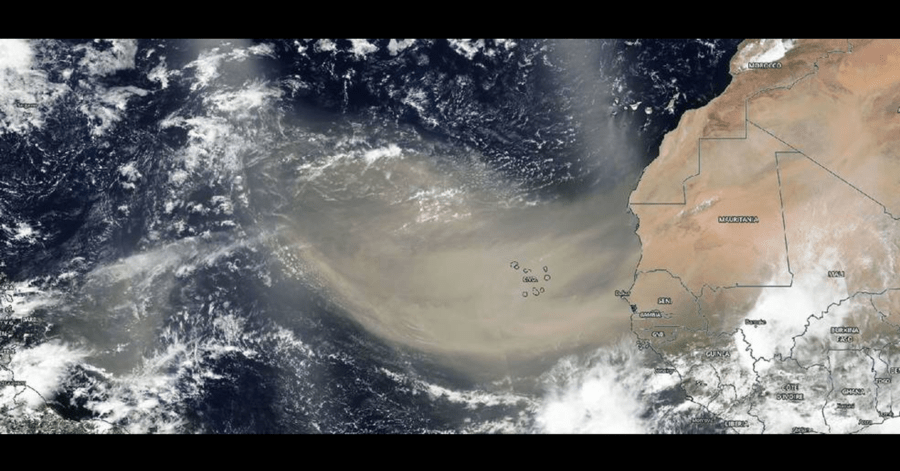U.S. News
Watch out for the ‘Godzilla’ dust cloud heading towards the US [Video]

WHAT YOU NEED TO KNOW:
- Nicknamed ‘Godzilla’, the massive dust cloud from Western Africa will hit the US Gulf Coast.
- The Saharan dust layer can cover a two-mile thick layer in the atmosphere bringing white skies during the day, fiery red sunsets, and poor air quality.
- People with respiratory conditions are advised to stay indoors as the poor air quality could trigger attacks.
A massive cloud of extremely dry and dusty air from Western Africa is about to hit the US Gulf Coast. Nicknamed “Godzilla” because of its unusual and huge shape, it can occupy roughly a 2-mile thick layer in the atmosphere.
According to the National Oceanic and Atmospheric Administration (NOAA), this is a yearly occurrence every three to five days from late spring to early fall, peaking in late June to mid-August, when the Saharan Layer forms over the Sahara Desert and moves across the North Atlantic.
Pablo Méndez Lázaro, an environmental health specialist with the University of Puerto Rico said, “This is the most significant event in the past 50 years.” He added that due to the extremely poor air quality, “conditions are dangerous in many Caribbean islands.”
Godzilla has already left several Caribbean islands in its path, coated with dust.
Godzilla has now traveled over 4,000 miles from the Atlantic Ocean to the Caribbean Sea and the Gulf of Mexico and will bring fiery redder sunsets, white hazy skies, and the potential health problems of respiratory conditions from decreased air quality.

The Weather Channel warned that those with Chronic Obstructive Pulmonary Disease (COPD), asthma, and other respiratory conditions should stay indoors.
University of Texas meteorology lecturer Troy Kimmel said that the timing of the dust cloud’s arrival during the coronavirus pandemic is a silver lining as we’re all wearing masks.
The Weather Channel said that from the Gulf Coast, some of Godzilla’s dust may then move as far north and east as the Ohio Valley and mid-Atlantic this weekend.
Source: USA Today
